Finding Where the 112,000 Missing Hikers Went
Use on Colorado's Popular 14ers Drops 27% in 2021 — or 112,000 hiker use days — compared to a record-breaking 2020. So, where did they go?
At this point, the news is out. If you’re active in the outdoor community, you’ve probably seen that 14er use plummeted in 2021, according to a report from the Colorado Fourteeners Initiative.
This week, I’m teaming up with mountaineer and meteorologist Chris Tomer, to go beyond just reporting the numbers. We’re taking a look at what this trend means for your access to the outdoors, and for the state’s other trails in the long term.
By the way, I have compiled a list of the peaks and places requiring permits across Colorado this season, along with links to make your reservation. Click the button below to check it out.
Tomer's Take:
Fewer people climbed 14ers in 2021 versus record-breaking 2020.
Quandary Peak is the most climbed 14er with 35,000-40,000 hiking use days.
Full 2021 Colorado Fourteeners Initiative 14er use report can be found here.
“The pandemic boom in 2020 was followed by a significant bust in 2021, as trailhead communities looked to control parking, landowners closed access due to liability concerns, other recreational options opened up as the pandemic lessened, and wildfire smoke choked off visitation mid-summer,” said Lloyd F. Athearn, executive director of CFI.
Colo-reservation
The Pandemic rush of 2020 is unforgettable with record 14er crowds. The response was more restriction by authorities including heavy restriction on Steven's Gulch Road accessing Grays and Torreys, pay to park and shuttle service on Quandary Peak, camping and access restrictions in the Maroon Bells and Conundrum Wilderness, reservations in RMNP and timed entry on Longs Peak, and reservations to access Mount Evans Road.
Will this nearly 30% drop in visitation be enough to stop more restrictions?
Migration to 13ers
I hike a lot of 13ers. I've personally seen an increase in traffic on many 13ers in the Central and Northern Mountains especially near the Front Range. Will the 13ers continue to be the relief valve as new restrictions are added in the coming years?
Busy 7 days per week
The pandemic significantly changed the paradigm of climbing 14ers in Colorado. Remote work shifted when people climb. While crowds are still big on weekends you can now find bigger crowds every day of the week.
Certain peaks like Little Bear require caution because of rockfall in the Hourglass route. Safely climbing the Hourglass requires cooperation among all climbers on-route. The old rule of thumb was to climb on weekdays and start early. Now, that's when most people climb Little Bear.
Search and Rescue
Alpine Search and Rescue continue to see a high volume of rescue calls on the Front Range 14ers.
Highway to Heaven
Quandary peak is an interesting case study. It's now busy year-round. Search and Rescue respond to calls year-round.
"Despite parking restrictions at the main trailhead starting on July 30, Quandary Peak remained the most climbed 14er in Colorado in 2021, with an estimated 35,000 to 40,000 hiking use days (best guess = 35,000 days). Use on Quandary dropped 29% from an estimated 45,000 to 50,000 days in 2020", Athearn said.
This suggests even with a shuttle and/or required $50 price to park at the trailhead that people continue making Quandary a high priority to climb. What effect would charging $100 to park at the trailhead have on foot traffic?
Emerging Trends
Drop in overall 14er foot traffic 2021
Migration to 13ers
High demand for Quandary Peak in spite of heavy restriction
High traffic 7 days per week on most 14ers
Parking challenges
Movement off established trails to new routes and loops
Movement to alternate trailheads avoiding restrictions
Movement to more day trips avoiding overnight restrictions
Cole’s Conclusion
The data will likely be misinterpreted to justify more trail restrictions
This change is more than just a correction after an anomalous year
Fewer boots on the ground doesn’t mean less trail impact
I was expecting to see a decline in hikers as we came out of the pandemic, and a lot of temporary hikers returned to their former hobbies and routines.
I wasn’t expecting one of the lowest summiting seasons on record:
What’s Stopping these Visitors?
As Tomer points out, restrictions tend to be a limiting factor. I pulled the numbers from all six CFI use reports on record and mapped the trends among the peaks that were consistently the most popular.
We can’t extrapolate too much, with such a small time window. But we can see a post 2020 slump on all popular peaks, save for Elbert. I’m not quite sure why this is the case, but I’m keeping my eyes on it for next season.
The appetite for Quandary remains insatiable, as Tomer pointed out. Proximity to Breckenridge may make it more enticing for people looking to make a day out of their climb. Even though you need to pay, there’s something to be said for certainty: you know when you arrive, there will be a spot for you in the lot.
The same can’t be said for others such as Grays and Torreys. There’s no way to know whether trailhead parking is full until you’ve made the long drive up Steven’s Gulch. At that point your only options are to tack miles onto your hike by parking in the lower lot or give up and go home.
Going Down the Wrong Path
Tomer raises the question of whether these results will cause local governments to remove restrictions. I think they’ll go the opposite direction.
This stems from what I see as a failure to grasp the actual core of the problem:
Most 14ers have parking issues that look like foot traffic issues. CFI has said there’s no real capacity limit on a well-developed trail. Quandary is proof of this. Despite massive increases in visitor numbers since 2015: the trail quality has improved from a C to an A- in CFI’s rating system during that time period.
I worry that the people calling the shots will see this data and seize on visitor numbers as a metric they can easily control; even though it’s not the metric causing the problem.
Unintended Consequences
The real problem is the combination of visitor behavior, and how well made the trail is. 100,000 visitor use days can have a much more severe environmental impact when spread out across less established 13er trails, rather than concentrated on the most popular 14ers.
I’ve seen many writers conclude that spreading out hikers would be better for conservation. This seems to be a logical conclusion, for those who are a bit less familiar with the process of trail development and maintenance.
The Colorado Fourteeners Initiative has 58 mountains under its purview. The organization is quite adept at determining where problems are and directing resources to fix them.
Colorado has more than 600 13ers. Building and monitoring these trails would take way more effort. In other words: sometimes the devil you know is better than the devil you don’t.
If 13ers do become the relief valve for restrictions as Tomer describes it, then leaders will have succeeded only in pushing the problem from peak to peak.
Backward Trends with Rescue Calls
Tomer points out that rescue calls stayed high despite the large drop-off in hikers. It’s because of a phenomenon that might seem a bit backward at first, called “crowd rescuing.”
Less experienced hikers usually don’t know enough to get into deep trouble
Novice hikers tend to make lost party, exhaustion, or minor injury calls
These emergencies can typically be solved by other hikers on the mountain
So, while fewer hikers on the trail means fewer potentially distressed hikers, it also means fewer potential on-scene rescuers. The equation balances itself out.
Survey Says: Visitors are Happy
At this point I’d like to address a technically correct, but somewhat misleading article by Summit Daily News, called “Visitors Satisfied with Quandary Peak Experience After County Revamps Shuttle and Parking Program.”
I’ll brush past the article’s claim that the shuttle system is directly responsible for a drop in rescue calls, since I already discussed the lack of connection between visitor use and rescue numbers.
The big eyebrow-raising point for me was this:
'“A visitor satisfaction survey designed by the Summit Board of County Commissioners backs Lawrence’s thoughts as the majority of visitors to Quandary Peak thoroughly enjoy their full-day excursion.
‘Satisfaction of the shuttle system is 7.6 out of 10 and overall satisfaction of their experience is 10 out of 10,” Lawrence said. “I think it’s great, I think people are beginning to understand. People are starting to become used to planning ahead before coming to these popular places.’”
The survey referenced in the article is a questionnaire you can complete and turn in at the trailhead, after you’ve already paid for either the shuttle or a parking spot. This is a massive data methodology problem; the survey excludes untold numbers of hikers who didn’t come to Quandary because they didn’t like this system.
It would be a bit like conducting a poll about eating habits at a steakhouse, and concluding there are no vegans or vegetarians in the country.
The problem isn’t Summit Daily’s title. The survey it’s based on is just too flawed to produce a result that offers any real insight into hiker behavior.
How this Changes Hiking in Colorado
I don’t see the trend of restrictions turning around any time soon. I’m also not arguing against taking some kind of action here. I just think we don’t have the necessary information to draw the conclusions and justify the policy decisions we’re seeing.
I worry this misinterpretation will end up causing more environmental damage on remote trails, while hurting access to outdoor spaces; but I hope to be proven wrong.
We Want to Hear from You
What do you think about the report?
Have trail restrictions changed the way you plan your hikes?
Do you think these problems will get better or worse?
Also, big thanks to Chris Tomer for taking the time to collaborate with me on this piece. You can check out his work here, for potentially life-saving information about mountain weather forecasts, from one of the best in the business.




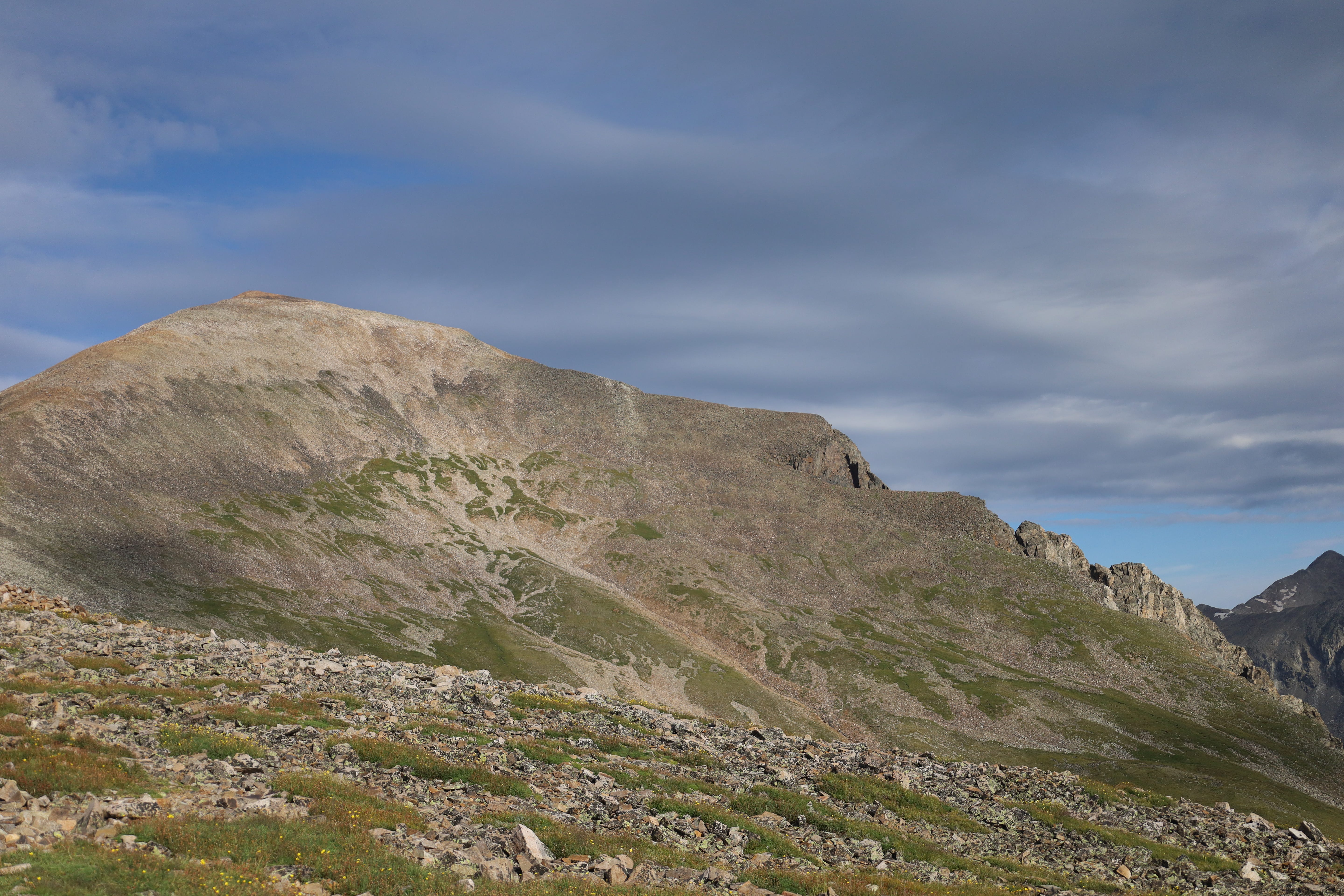
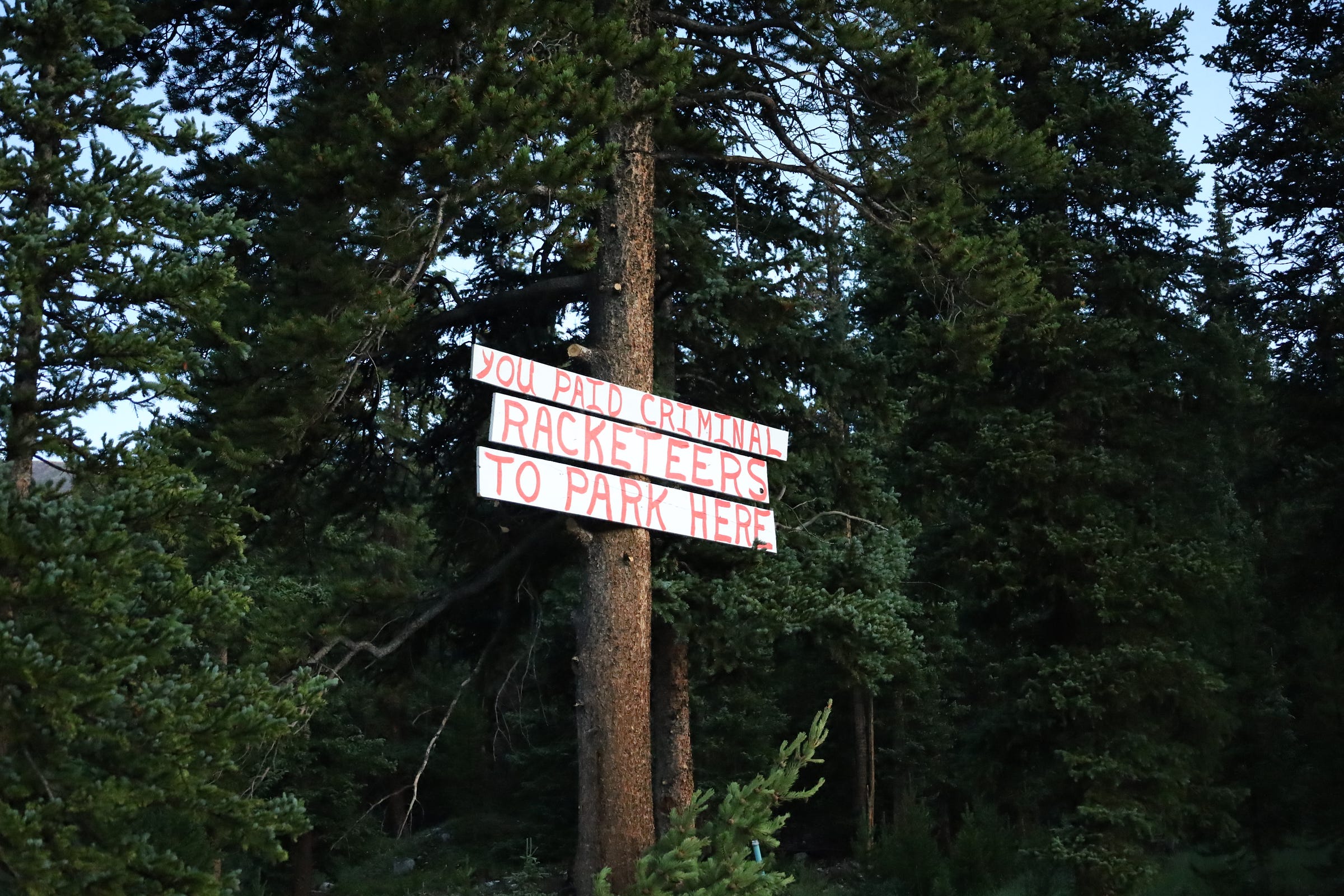

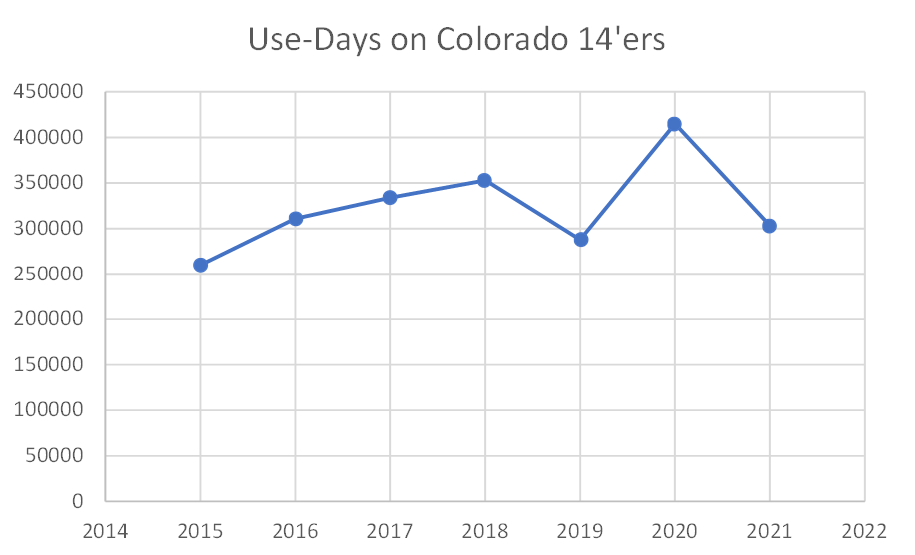
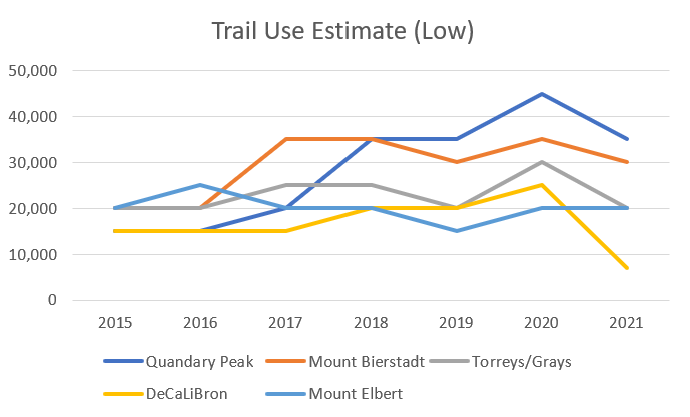
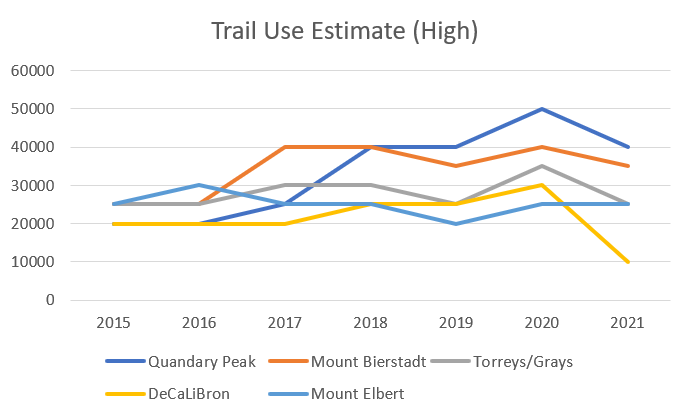


I am the owner of Climb13ers.com. Just read your article about the decline in 14er visitations. Thought you might be interested in the following stats taken from our website: climb13ers.com.
2018 calendar year total users: 64,855
2019 calendar year total users: 72,401
2020 calendar year total users: 78,334
2021 calendar year total users: 68,877
2022 users to date: 59,410 this is within 1% of where we were in 2021 at this same time.
The decline seems to parallel what you're seeing on 14ers, however, these are only site use statistics and may or may not reflect actual climbers on 13ers. Nevertheless, the decline of over 9,000 users is significant. You may also want to contact Bill Middlebrook at 14ers.com to see if he has similar stats.